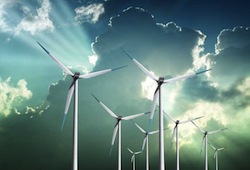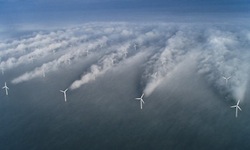The European Wind Energy Association (EWEA) has been busy promoting wind energy throughout the European Union (EU). Last week, the European Commission identified key actions to develop the internal energy market by 2014 that included the phasing- out of regulated electricity prices and the Commission was also critical of capacity payments. In addition, the proposal lacks further development of the internal energy market after 2014.
out of regulated electricity prices and the Commission was also critical of capacity payments. In addition, the proposal lacks further development of the internal energy market after 2014.
But EWEA says these actions do not go far enough as both regulated prices and capacity payments are major obstacles to a properly functioning EU energy market. “Regulated prices, fossil fuel and nuclear subsidies, market concentration and lack of market transparency are the main problems that need to be tackled urgently. The communication focuses too much on renewable energy support mechanisms and not enough on the most critical distortions,” explained Paul Wilczek, EWEA Senior Regulatory Affairs Advisor.
Wilczek says the European Commission is right to be critical of capacity payments, which are a disincentive to invest in urgently needed grid infrastructure and create another distortion to the energy market, and also adds that the European wind industry is very strongly in favour of a single market in electricity and has been critical of the slow progress towards it.
Last week the European Commission also published “structural measures” that called for “backloading” of emission allowances. EWEA says this is needed to stop the massive oversupply of emission allowances and to re-establish confidence in the EU Emissions Trading System (EU ETS). Stéphane Bourgeois, Head of Regulatory Affairs for EWEA added that while it is a necessary first step, it will only delay and not solve the structural problem of oversupply in the ETS and a structural solution must be agreed or the carbon price will not recover.
“EWEA remains of the view that a move to 30 percent greenhouse gas reduction by 2020 is the best fix to the Emissions Trading System. A 30 percent target would be in line with the advice of the International Panel on Climate Change, to keep the increase of the average global temperature below 2° Celsius. Changing the so-called “linear factor” is the second best option: the total amount of emission allowances currently decreases by a ‘linear factor’ of 1.74 percent annually. This factor must be increased. As a third option a retirement of emissions allowances can also be effective,” added Bourgeois.
The European Commission has acted to rescue the European Emission Trading System (EU ETS) by proposing to postpone the auctioning of 900 million allowances from 2013-2015 to the next phase of the EU emissions trading system, which ends in 2020.
 “We support this step. But back-loading only 900 million allowances is not enough to re-establish an effective carbon market in Europe. The Commission itself estimates the oversupply of allowances to reach 2 billion by the end of 2013,” said Rémi Gruet, Senior Adviser for Climate and Environment for EWEA.
“We support this step. But back-loading only 900 million allowances is not enough to re-establish an effective carbon market in Europe. The Commission itself estimates the oversupply of allowances to reach 2 billion by the end of 2013,” said Rémi Gruet, Senior Adviser for Climate and Environment for EWEA.
EWEA warns: with low carbon and coal prices, a switch from gas to coal is already happening in electricity production and the risk of new coal-fired capacity investments is very real. “We need a high and stable carbon price, which together with renewable energy targets, will drive investment decisions in the power sector towards wind energy and other renewables, rather than locking in fossil fuels for the next 40 years,” added Gruet.
EWE predicts that as the economic crisis continues, oversupply of emissions allowances is likely to be higher than anticipated by the Commission, especially given the recent decision on aviation.
Gruet concluded, “I urge the Members of the European Parliament and the EU Council to swiftly agree on the Commission’s proposal to backload allowances, and to enable a discussion on a long-term structural solution to the ETS.”

